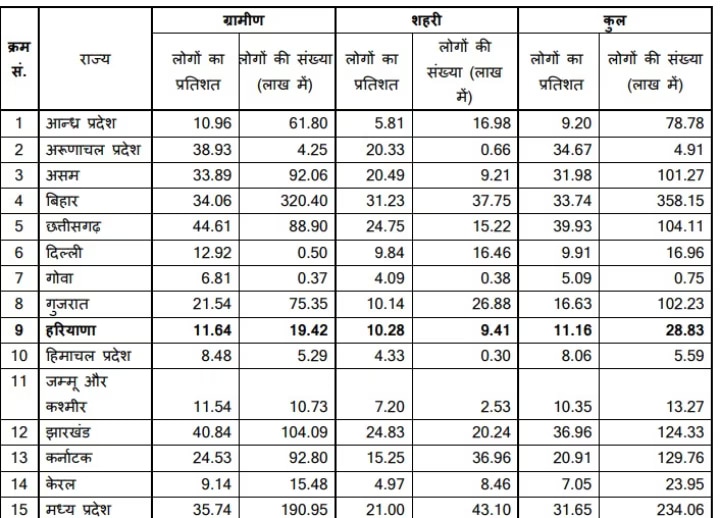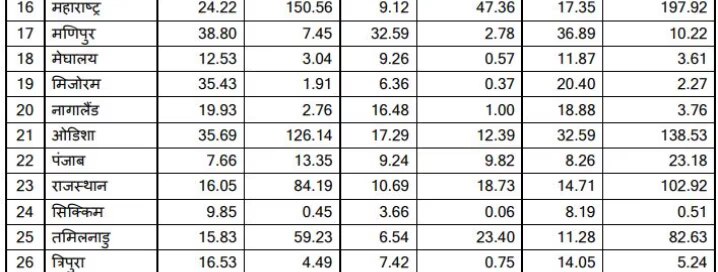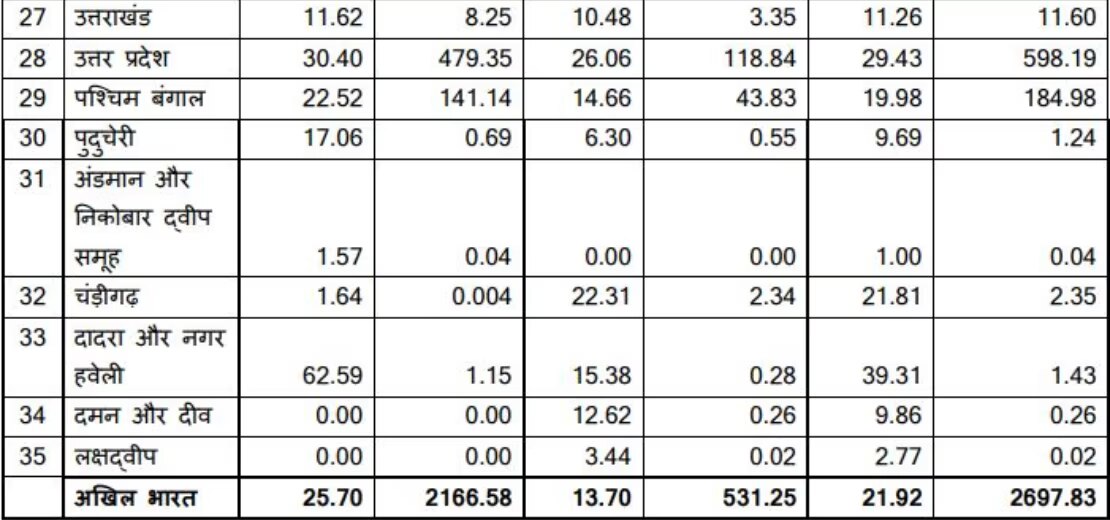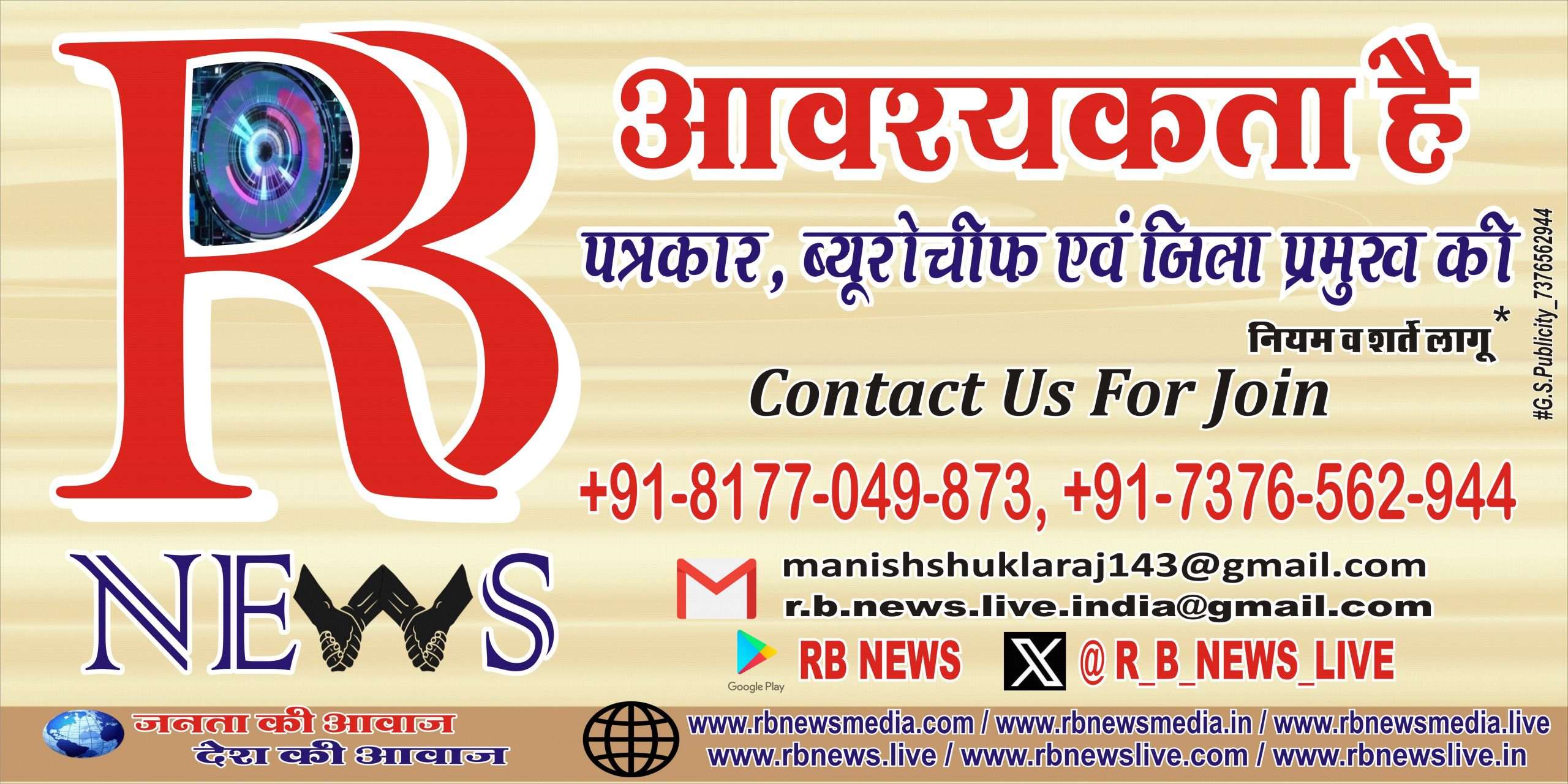In India, for the last 75 years, different political parties have been coming to power by giving slogans related to poverty. In 1971, Indira Gandhi formed the government with the slogan of eradicating poverty. After him, Rajiv Gandhi also gave the same slogan and became the Prime Minister of the country. Then in 2014, Narendra Modi also made many promises to remove poverty from the country.
Now once again Lok Sabha elections are going to be held in the country in the next few days. While presenting the budget in the Parliament before the elections, the Finance Minister said that the government has only one goal – no poor person in the country should sleep hungry. Through this slogan, Modi government wants to unite the 80 crore people of India.
It has been more than 75 years since India got independence. During this period the country saw 12 Prime Ministers. But the issue of poverty and hunger remained the same. Recently a report of NITI Aayog has claimed that the poverty level has reduced rapidly in the last few years.
NITI Aayog CEO B.V.R. Subramaniam says that in the last few years, people in both urban and rural areas have become more prosperous. Not only this, there is not much difference in the expenditure between the two areas.
According to the same report of NITI Aayog, in the financial year 2013-14, 29.17 percent of India’s population was poor according to MPI (Multidimensional Poverty Index). Which has reduced to 11.28 percent in the financial year 2022-23. That means, according to MPI, 17.89 percent people have come out of poverty in these nine years.
Looking at these figures, it would not be wrong to say that in these three decades, tremendous progress has been shown in making the slogan of eradicating poverty alive. But there is another side to this story also.
Some economists claim that the complete picture has not been presented in this report. According to the Global Hunger Index (GHI) list released in 2022, India is ranked 107th among 121 countries.
In such a situation, the question arises that if poverty is really ending in India then why is the condition of the country so bad in the Hunger Index?
First understand who are the poor people
Actually, many aspects are responsible for defining the word ‘poor’. But generally those who cannot fulfill their basic needs are kept in the category of poor.
According to the Indian Planning Commission, calorie intake has been considered as one of the parameters of poverty. People who consume less than 2400 calories in rural areas and 2100 calories in urban areas are considered poor.
There are other scales to measure poverty in India. In the list issued by NITI Aayog, people are divided into categories on the basis of MPI. MPI defines poverty on the basis of some important and basic parameters of health, education and lifestyle.
Is this MPI i.e. Multidimensional Poverty Index?
9 years ago i.e. on 25 September 2015, 17 SDGs (Sustainable Development Goals) were decided by the United Nations General Assembly. The biggest objective of SDG was to uproot poverty. It was also clearly stated in the Sustainable Development Goals that poverty cannot be determined by any single standard. This is why MPI was developed.
MPI helps the UN to assess the poverty situation in countries around the world. MPI is calculated on the basis of some different indicators and the United Nations General Assembly has also made an account of it. However, according to its situation, every country can make slight changes in these indicators.
Now understand how MPI is calculated in India
In India, MPI is calculated on the basis of 12 indicators. These 12 parameters include indicators such as nutrition, years of schooling, care during pregnancy, child and adolescent mortality, fuel used for cooking and school attendance.
These 12 criteria include cleanliness, which houses have electricity. Which houses have availability of drinking water, whether they have a house or not, the amount of property and whether they have an account in bank or post office or not.
The World Economic Forum has given four standards of poverty, people who are unable to fulfill them are considered poor.
1. Availability of quality education
2. Access to technology
3. Work opportunities, salary and style of work
4. Social Security
What is this poverty, which reduces drastically in every government, but has not ended even after 75 years?
Condition of the poor in India in the last 30 years
Year 1971: According to the census of this year, the population of India at that time was 54 crores. Of these, 57% of the population was below the poverty line and about 66% were illiterate. According to the census, at that time more urban population than rural population was living below the poverty line.
Year 2020: This year, the United Nations organization UNDP had released a report in which it was said that out of the total population of 135 crore people of India, 22 crore people are still below the poverty line. Compared to other countries of the world, the number of poor in India is at the top. However, in the same report it was also said that in the last 20 years, 40 crore people have come out of the poverty line in this country.
However, in the list of Global Hunger Index (GHI) released in the year 2022, India was ranked 107th among 121 countries. The report said that after Corona, 5 crore 60 lakh Indians again fell below the poverty line.
Poverty is decreasing in India, yet why are people remaining hungry?
Kuldeep Sharma, professor of economics at Patna University, while talking to ABP, said, ‘What percentage of the population in India is poor is calculated on the basis of people’s income. But there is a flaw in this scale of determining the poverty line and that is that due to this method of surveying, other dimensions of poverty are ignored.
For example, consider that on one side there is a homeless person and on the other side there is a person who has a roof to live on and electricity in his house, both of these people are below the poverty line on the basis of income, but on the basis of ground level, If seen at the level, the condition of a homeless person is much worse than that of a person with a house.
This is the reason why NITI Aayog and UNDP reports come separately in this country. Although both these institutions use NFHS data to calculate multidimensional poverty, their system of calculating who is outside the poverty line is slightly different.
Controversies related to poverty estimation
The NITI Aayog report also claims that various welfare schemes have played a major role in reducing the gap between the rich and the poor in the country.
However, in a report by DW, Arun Kumar, a professor of economics at Delhi’s Jawaharlal Nehru University, says that the government’s report needs reinterpretation.
He further said that using the data of the Fifth National Family Health Survey for the year 2019 and 2021, there would have been significant errors in the deprivation index based on the survey, due to which the conclusions of the NITI Aayog report have come under doubt.
What report has come regarding poverty in which state of India?
Chhattisgarh is the poorest state in India. After this, poverty is also at its peak in Jharkhand, Manipur, Bihar, Arunachal Pradesh and Assam. The names of Maharashtra, Tamil Nadu, Gujarat, Karnataka, UP and Rajasthan come among the richest states.



How do people of the richest state Gujarat become poorer than the people of Bengal?
According to the National Multidimensional Poverty Index report for the year 2023, 11.89 percent of the population of West Bengal lives under multidimensional poverty, while the figure in Gujarat is 11.66 percent, which is slightly less than West Bengal.
However, it is also a fact that according to the estimates of 2021-22 of the Ministry of Statistics, the average per capita income of Gujarat is around Rs 2.5 lakh per year, which is almost double of West Bengal’s Rs 1.24 lakh.
What is the situation according to caste?
By caste, 45.3 percent ST, 31.5 percent SC, 22.6 percent OBC and 15.5 others are below the poverty line in rural areas of India. On the other hand, in urban areas, 24.1 percent ST, 21.7 percent SC, 15.4 percent OBC and 8.1 others are below the poverty line.
 RB News World Latest News
RB News World Latest News






